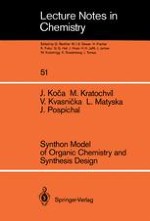One of the most interesting fields of mathematically oriented chemical research is the so-called computer-assisted organic synthesis design. These lecture notes elaborate the mathematical model of organic chemistry, which offers formal concepts for unambiguous description of computer algorithms for organic synthesis design including retrosynthesis and reaction mechanisms. All definitions and theorems are supplemented by many illustrative examples. The model is closely related to the course of thinking of organic chemists. These notes will be useful for all theoretically oriented organic chemists who are interested in mathematical modelling of organic chemistry and computer-assisted organic synthesis design.
